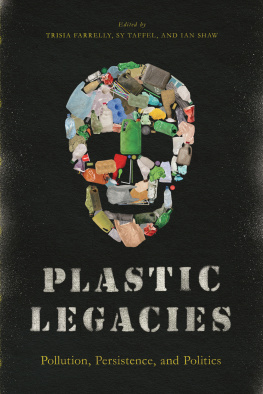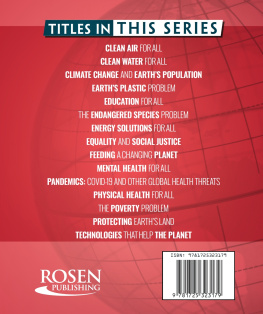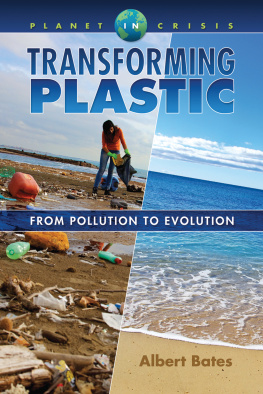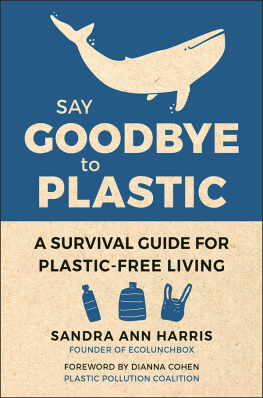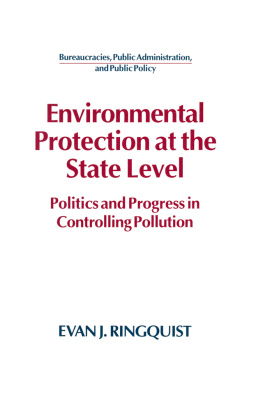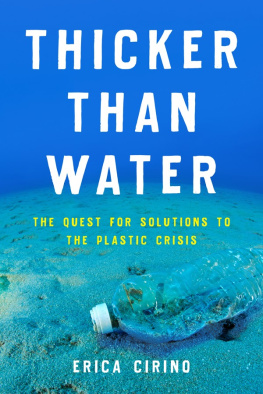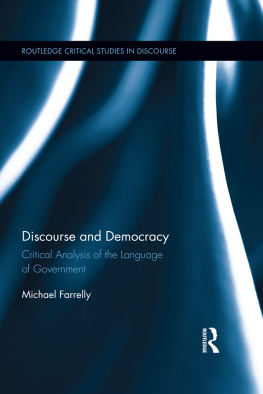Copyright 2021 Trisia Farrelly, Sy Taffel, and Ian Shaw
Published by AU Press, Athabasca University
1200, 10011 109 Street, Edmonton, AB T5J 3S8
https://doi.org/10.15215/aupress/9781771993272.01
Cover image: collage of images from Shutterstock (73913416, 91155179, 136314392, 193978946, 194617823, 674811316, 1203969238, 1261148134, 1420338494, 1450716176, 1450732997, 1689704221, 1718764735, 1747330817, 1791703958, 1791703961, 1791703967)
Cover design by Derek Thornton, Notch Design
Interior design by Sergiy Kozakov
Printed and bound in Canada
Library and Archives Canada Cataloguing in Publication
Title: Plastic legacies : pollution, persistence, and politics / edited by Trisia Farrelly, Sy Taffel, and Ian Shaw.
Names: Farrelly, Trisia, editor. | Taffel, Sy, editor. | Shaw, Ian C., editor.
Identifiers: Canadiana (print) 20210215879 | Canadiana (ebook) 20210215941 | ISBN 9781771993272 (softcover) | ISBN 9781771993289 (PDF) | ISBN 9781771993296 (EPUB)
Subjects: LCSH: Plastic scrap. | LCSH: Plastic scrapEnvironmental aspects. | LCSH: Plastic scrapSocial aspects. | LCSH: PlasticsEnvironmental aspects. | LCSH: PlasticsSocial aspects. | LCSH: Plastics industry and tradeEnvironmental aspects. | LCSH: Plastics industry and tradeSocial aspects.
Classification: LCC TD798 .P53 2021 | DDC 363.72/88dc23
We acknowledge the financial assistance provided by the Government of Alberta through the Alberta Media Fund.
Please contact AU Press, Athabasca University at for permissions and copyright information.
Introduction Our Plastic Inheritance
Trisia Farrelly, Sy Taffel, and Ian Shaw
Plastics have revolutionized our lives. They have made possible things such as smartphones, modern cars, and LCD screens that depend on the light weight, high strength, and electrical and thermal insulation of plastics. They have enabled the production of disposable surgical equipment that ensures sterility, thereby minimizing inter-patient disease transfer. Countless lives have been saved, and the use of antibiotics has been reduced, as a result of lower levels of post-operative infection. Plastics allow the minimization of food contamination by harmful bacteria and reduce food-borne illnesses. With COVID-19, health or frontline workers and the vulnerable population rely on Personal Protective Equipment (PPE) made of plastic. On the face of it, plastics are good .
Despite the wonderful advances that plastics have enabled, however, thousands of unnecessary uses have developed simply because plastics are cheap and disposable. Drink containers, bags, straws, cutlery, and other single-use disposable plastics bring few tangible benefits to the vast majority of people who use them for their convenience. A lot of single-use PPE equipment ends up in the environment. This could be avoided if they were swapped for reusables for those not working on the frontline and for those not immune compromised. Many plastic itemsincluding toys and other items meant for recreation, entertainment, or aestheticsoften last little longer than plastics specifically designated for single use. When plastics are deemed disposed of responsibly, this often involves the export of recyclable material from higher-GDP to lower-GDP countries. Whether responsibly or irresponsibly managed, all plastics will eventually find their way into the biosphere.
Plastics are polymers: molecules composed of repeating monomer units strongly bonded together. The adjective plastic refers to the capacity of these malleable materials to be moulded and set. Historically, a range of natural malleable materials such as rubber, ivory, and amber were employed (Bensaude-Vincent 2013). However, by the late nineteenth century, the industrial demand for these pliable materials exceeded their supply. Subsequent to the invention of Bakelite in 1907, the first petrochemical-derived synthetic plastic, there has been a meteoric growth in the production of synthetic polymers, to the point that they are now synonymous with the word plastic itself; when other plastics are mentioned, they tend to be prefixed as natural or bioplastics. Although no synthetic polymers were produced prior to 1907, and less than half a million tonnes were produced annually by 1950, by 2016, global plastics production reached 335 million tonnes per annum (PlasticsEurope 2017). That figure is set to go higher with continued activity in the petrochemical sector. In 2015, the Ellen MacArthur Foundation estimated that by 2050 the worlds oceans will contain more plastics by weight than fish (MacArthur, Waughray, and Stuchtey 2016). Then, in 2017, a report predicted a 3336 percent increase in plastics production by 2025 and illustrated how the fossil fuel industry is driving that production, with no sign of slowing down (CIEL 2017). For example, Exxon Mobile and Shell Chemical have poured almost $200 billion into new cracking plants since 2010 to produce everyday consumer plastics in the United States.
There is virtually nowhere on Earth today that remains untouched by plastics. They are found in the Arctic Ocean (Obbard et al. 2014), 83 percent of global tap water samples, air, honey, beer, soil, and sea salt (Kosuth, Mason, and Wattenberg 2018). One hundred percent of animals tested at the bottom of the ten-kilometre-deep Mariana Trench, one of the most remote places on the planet, had ingested plastic (Jamieson et al. 2017).
Because of the chemical nature of plastics, bacteria and other living members of the biosphere cannot readily degrade them, so they persist in the environment. During their afterlife, they are buffeted and pulverized by the physical environment and broken down by marine fauna such as Antarctic krill (Dawson et al. 2018). These processes eventually lead to the formation of microplastics and nanoplastics small enough to penetrate cell membranes. Plastics fill the stomachs of animals when they are mistaken for food, making them feel full while providing no nutritional value and damaging their digestive tracts. Some of the monomers used to produce plastics, such as bisphenol A (BPA) and styrene, are toxicants, as are many of the plasticizers, colourants, flame retardants, and UV stabilizers added to those monomers. In marine and freshwater environments, plastics tend to adsorb (attract) persistent organic pollutants (POPs) such as pesticides and other toxic substances. When ingested, plastics leach these toxicants into tissues and organs, where they bioaccumulate. When these creatures are eaten by predators, such as larger fish, whales, or humans, these toxic substances biomagnify, meaning that they are found in higher concentrations further up the food chain (Rochman 2015). In short, they wreak havoc on ecological and biological systems. So, after a bit more consideration, perhaps plastics are not as good as we originally thought.



